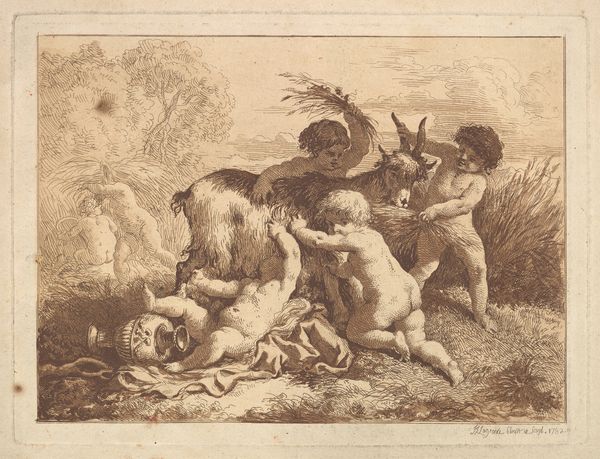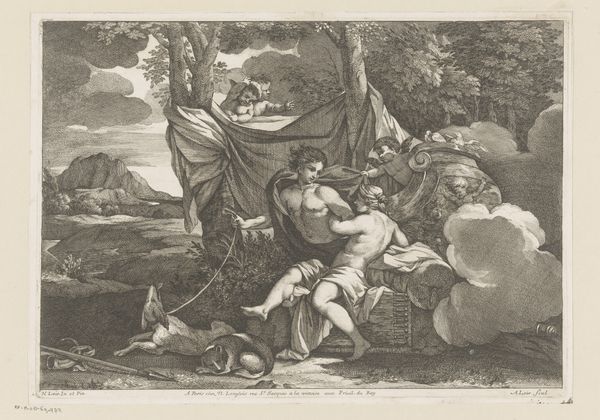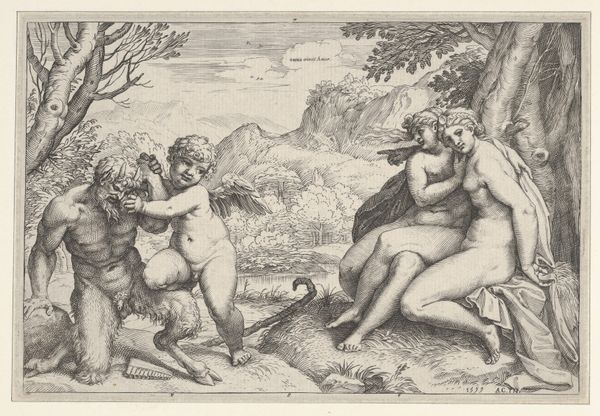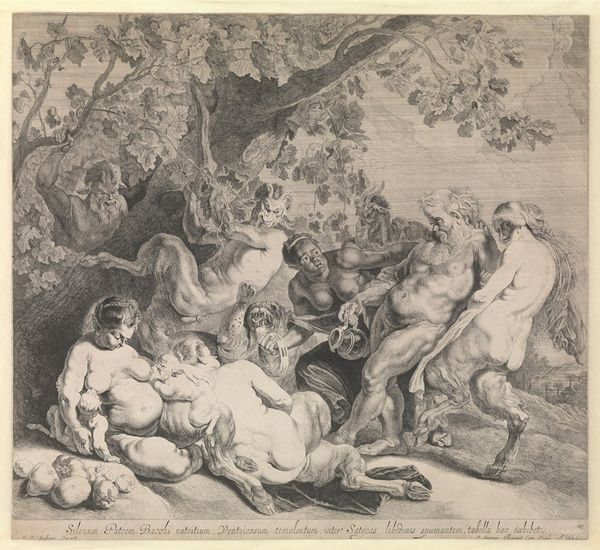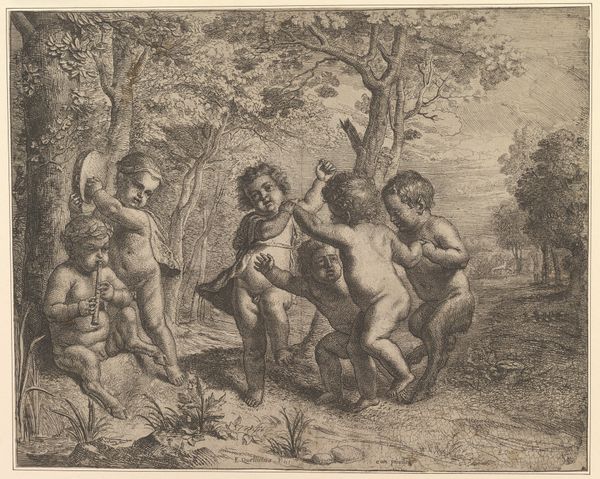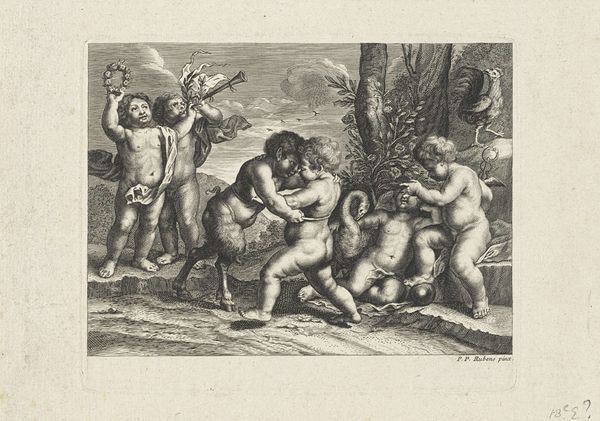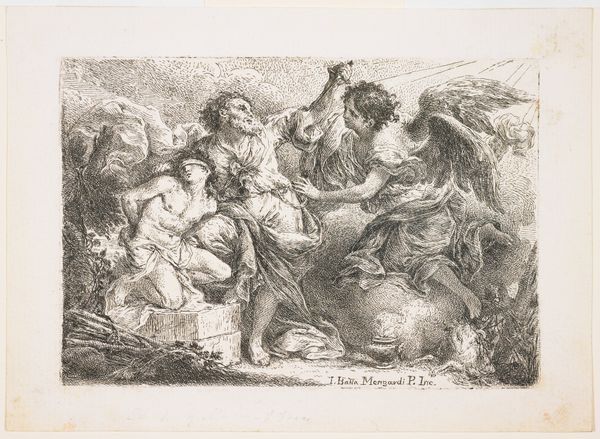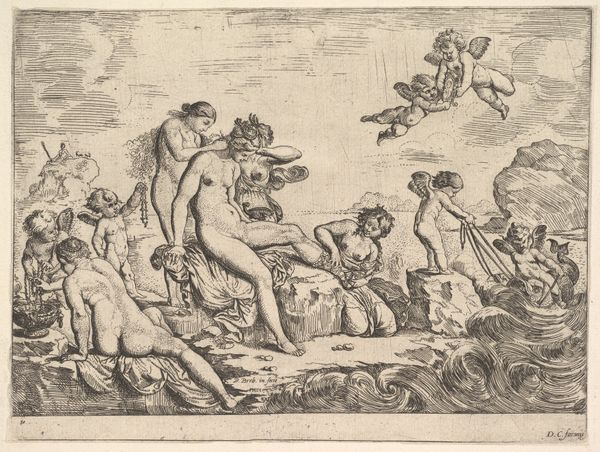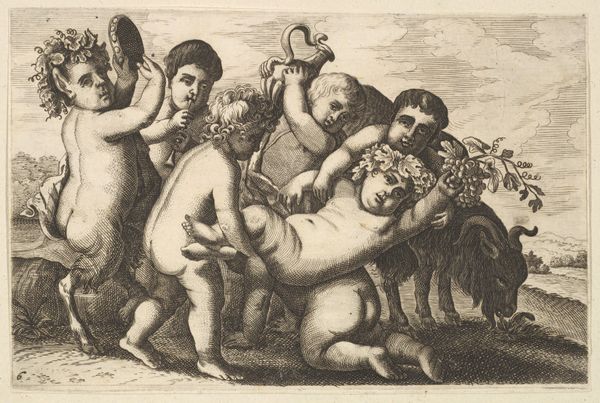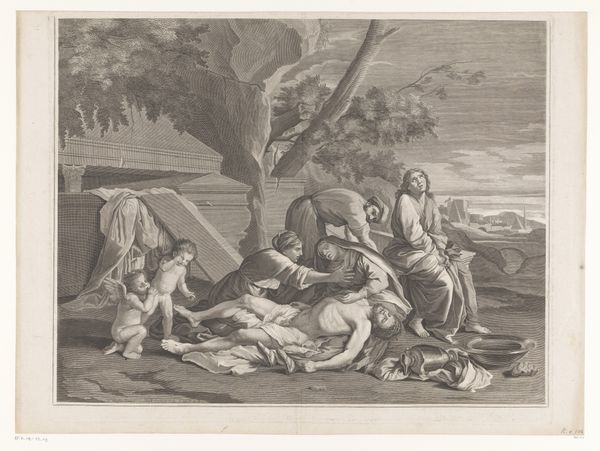
drawing, print, etching, engraving
#
drawing
# print
#
etching
#
landscape
#
boy
#
figuration
#
limited contrast and shading
#
portrait drawing
#
engraving
Dimensions: Sheet: 4 13/16 in. × 8 in. (12.3 × 20.3 cm)
Copyright: Public Domain
Curator: What an enchanting pastoral scene! This etching, made in 1647 by Wenceslaus Hollar, is titled "Two young satyrs and a boy," though it’s a reversed copy after another artist, likely Parmigianino. Editor: My first impression is of quietude. It’s monochromatic, sure, and the line work gives it this almost… dreamlike haziness. What kind of etching process would give it such a diffuse appearance? Curator: Hollar was known for his skill with the etching needle. The plate was likely bitten multiple times in acid baths to achieve those nuanced tones and fine lines. Look at how the cross-hatching creates depth and form, especially in the bodies of the satyrs and animals. The scene suggests a classical Arcadia; the satyrs themselves are potent symbols, rooted in pagan ideas and beliefs. They embody primal energies and freedom. Editor: That makes sense, but I am curious about what paper he favored, what his studio setup looked like, or the socioeconomic aspects of making reproductive prints at this moment in history. This was hardly a straightforward or value-neutral task! What does this work contribute to art reproduction, for example, given its function as a "copy?" Curator: A crucial question! The act of copying served an essential purpose back then: spreading visual ideas, documenting artwork. Hollar disseminated the aesthetic of masters to audiences far beyond Italy. Each line, each detail preserved, allows the Renaissance visual tradition to persist. The choice of satyrs suggests a broader continuity, an acknowledgement of folklore and an ongoing fascination with figures existing in a transitional, liminal state between human and animal. Editor: And that also reminds us that there's value in exploring the material consequences and value of a print intended as dissemination. The etching tools, inks, paper – were precious. And this was meant for distribution in a growing consumer market, connecting this image, classical themes, and material value of the moment, which speaks to its wider significance beyond visual resemblance. Curator: That’s a wonderful point. The image contains both material history and symbolic persistence, reflecting shifting tastes and beliefs through these figures playing instruments and simply enjoying a scene within nature. It presents enduring, timeless symbols through reproducible media. Editor: Looking closely again, one can really appreciate both the pastoral and political sides of an artist engaging materials while copying ancient, enduring themes. Thank you.
Comments
No comments
Be the first to comment and join the conversation on the ultimate creative platform.

